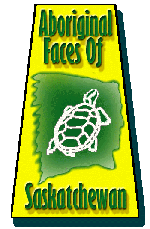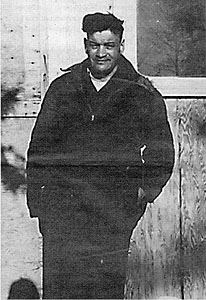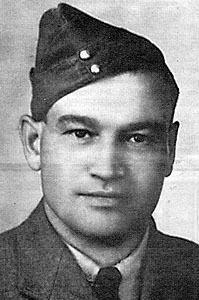|
|
||||||||
Jim Brady (1908-1967) By Leah Dorion Reprinted
with permission from
Jim Brady was born in 1908 at Lake St. Vincent near St. Paul des Metis, Alberta. His father, Jim Brady Sr. was a dominion land agent, postmaster and wealthy store-keeper of Scottish ancestry. His Metis mother, Philomena Archange was one of the first Metis registered nurses in the area. Brady grew up in St. Paul des Metis which was the largest Metis community in Alberta. He was partially raised by his maternal grandfather, Lawrence Garneau, who was involved with Louis Riel and the Metis in the resistances of 1870 and 1885. His grandfather taught him about the roots of the historic Metis struggles in the northwest. St. Paul des Metis consisted of many dispossessed Metis with militant ideologies which were to have a tremendous influence on Brady's life. Members of the Brady family were strong advocates of Metis identity and social equality. As a young man, Brady was tutored by various politicians, radicals and union supporters. During the 1920s he worked as a labourer and became knowledeable about the politics of work, as well as that of the prairies. During these years Jim Brady adopted Marxist philosophies. In the early 1930's, Felix Callihoo, Peter Tomkins, Jim Brady, Joe Dion, and Malcolm Norris, joined together to work for the Metis cause. These men are often called the "fabulous five" for their strong commitment toward politically organizing the Metis in Alberta. Together they helped form the Metis Association of Alberta by actively travelling to Alberta Metis communities to raise political awareness. The priority of the Metis association was to petition the government and raise awareness about Metis issues. In 1933, the Alberta Metis Association had 1,200 members in 41 locals. In the early 1930s, these Alberta Metis leaders with the support of local Members of the Legislative Assembly and Members of Parliament, Church officials and medical doctors urged the provincial government to study the conditions of the Metis. In 1934, due to the intense lobbying of leaders like Jim Brady, the Halfbreed Commission, also known as the Ewing Commission, was appointed to begin hearing and consultations with the Metis. Jim Brady was viewed by his comrades as the political strategist during the commission hearings. As a result, the Metis Betterment Act was passed by the Alberta government in 1938 which provided Alberta Metis with land tracts and social welfare programs.
Reunited with Norris, they worked together to organize the Northern Saskatchewan Metis Association. Brady was a key organizer of the La Ronge local of the Metis Association. In 1965 the purpose of the Metis Association of Saskatchewan was, "to organize people of Indian ancestry in the Province of Saskatchewan in order to secure recognition for and realization of our hopes and aspirations towards a better way of life consistent with the opportunities available within Canadian Society." Jim Brady felt very passionate about Metis enjoying the same rights as other Canadian citizens. Art Davis conducted an interview with Jim Brady in 1960 for the Saskatchewan Archives Board. Brady had this to say about the future of the Metis people: "...they are and have been the victims of colonialism as well as any Asian or African, but they must be freed from all of the pernicious influences that this system of colonialism has forced upon them in British North America. They must be freed of the disabilities which colonialism has imposed upon them, or the vestiges of colonialism still impose upon them. Consequently, what we would refer to vaguely as the national liberation of the Indian people and the Metis people in Canada, cannot be completed until Canada as a whole and the western world as a whole free themselves of that vicious system which has imposed these conditions on a conquered people. You see the problem was you were dealing simply with the problems of a conquered nation and a defeated people. You see our struggle for national liberation, or a future destiny of our own, that struggle was fought out on the banks of the Saskatchewan River more than two generations ago." Brady was a very great thinker with amazing insights into the history of Metis oppression. In 1967, while on a prospecting expedition with a Cree friend, Brady and his partner disappeared. An extensive RCMP search ensued, but they were never found. Many northeners believe that the two men were murdered for political reasons. Jim Brady was an extraordinary leader and his ability to organize Metis people will be remembered well into the future. Some Metis families still remember how influential Brady's feelings of pride and dedication to make positive change, opened their minds to a different future. Sources: Murray Dobbin. One-And-A-Half-Men. Gabriel Dumont Institute, 1987. Anne Anderson. The First Metis: A New Nation, Edmonton, Uvisco Press, 1985. Jim Brady's papers are held in the Glenbow Archives in Calgary, Alberta. Links: |
|||||||||










